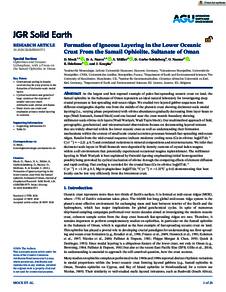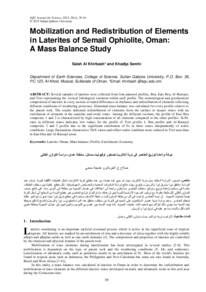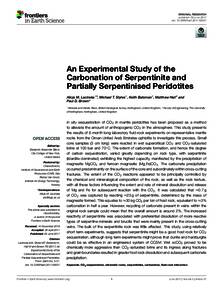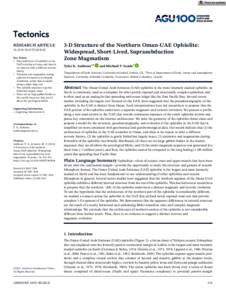Document
Formation of Igneous layering in the lower oceanic crust from the Samail ophiolite, Sultanate of Oman.
Identifier
DOI: 10.1029/2020JB019573
Source
Journal of Geophysical Research: Solid Earth. v. 126, 1, e2020JB019573
Contributors
Neave, D. A., Author
Müller, S., Author
Garbe‐Schönberg, D. , Author
Namur, O. , Author
Ildefonse, B., Author
Koepke, J. , Author
Country
United Kingdom.
Publisher
Blackwell Publishing Ltd.
Gregorian
2021-01-01
Language
English
English abstract
As the largest and best exposed example of paleo fast-spreading oceanic crust on land, the Samail ophiolite in the Sultanate of Oman represents an ideal natural laboratory for investigating deep crustal processes at fast-spreading mid-ocean ridges. We studied two layered gabbro sequences from different stratigraphic depths: one from the middle of the plutonic crust showing decimeter-scale modal layering (i.e., varying phase proportions) with olivine abundances gradually decreasing from layer bases to tops (Wadi Somerah, Sumail block) and one located near the crust-mantle boundary showing millimeter-scale olivine-rich layers (Wadi Wariyah, Wadi Tayin block). Our multimethod approach of field, petrographic, geochemical, and microstructural observations focuses on documenting layered textures that are widely observed within the lower oceanic crust as well as understanding their formation mechanisms within the context of small scale crustal accretion processes beneath fast-spreading mid-ocean ridges. Results from the mid-crustal sequence indicate moderate cooling rates (Ca-in-olivine: log[dT/dt; °C yr−1] = −2.21 ± 0.7) and correlated variations in mineral compositions and microstructures. We infer that decimeter-scale layers in Wadi Somerah were deposited by density currents of crystal-laden magma within a sill environment that potentially experienced occasional magma replenishment. The millimeter layering in Wadi Wariyah is best explained by Ostwald ripening emphasizing initial heterogeneities possibly being provoked by cyclical nucleation of olivine through the competing effects of element diffusion and rapid cooling. Fast cooling is recorded for the crustal base (Ca-in-olivine: log[dT/dt; °C yr−1] = −1.19 ± 0.5, Mg-in-plagioclase: log[dT/dt; °C yr−1] = −1.35°C ± 0.6) demonstrating that heat locally can be lost very efficiently from the lowermost crust.
ISSN
2169-9313
Category
Journal articles




